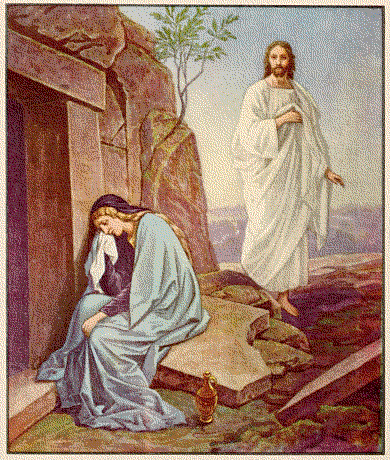John 20gives us a glimpse of the first experience of the empty tomb, and Mary Magdalene’s bewilderment in verse 2, “they have taken away the Lord out of the tomb, and we do not know where they have laid Him.”
As I reflect on some of her feelings of fear and shock, I wonder if she processed some of the other interesting aspects of the empty tomb after 2 days without embalming.
A normal tomb, based on the account of Lazarus in John 11:39, would have had a bad odor. Even today, Jewish burials follow the tradition dating back to before Jesus’ time. Washed, not embalmed. Cleaned off, not preserved. Once the body was wrapped and placed in the tomb – an opening in the rock with moist damp earth around – decay would begin. We all have seen enough CSI to know that odor of death begins. This tomb was clean and odor free.
We also know that the linen cloths were folded and lying in the tomb. John 20: 6-7 (NIV) “Then Simon Peter, who was behind him, arrived and went into the tomb. He saw the strips of linen lying there, as well as the burial cloth that had been around Jesus head. The cloth was folded up by itself, separate from the linens”. In contrast – the picture of Lazarus being brought back to life in John 11 is that of a “dead man walking” as they pulled the shrouds from him.
If the body has been prepared for burial with ritual cleansing, the body will automatically be dressed in tahrihim – those simple white shrouds mentioned earlier. Because of the ritual cleaning, including swaddling the face so that the deceased is both clothed and protected against the gaze of other people, no one would have stolen the body separate from the linen cloths and no one stealing a body would carefully fold the cloths. Can I suggest that as a woman Mary likely realized this picture was not right, but hadn’t yet processed it to realize this had to be a miracle!
Peter Marshall writes that it was the grave clothes left behind like the shell of a cocoon from which a moth has emerged – that caused the disciples to believe. He says, “The Greek word for see does not mean looking through a glass, but to see with inner light that leads one to conclusion. It is perception, reflection, understanding.
They arrived at the conclusion, the unshakable, unassailable, certain conviction that Jesus Christ had risen from the dead”. In verses 11- 15 we know that two angels spoke to Mary and then she had an encounter with Jesus which confirmed this miracle. In all the shock of the events of that day, and still not initially recognizing her, when she heard her name spoken in verse 16, she fell to her knees “Rabboni” (teacher) and worshiped. May we also understand the full implication of the empty tomb.
Picture source HERE
type in your search and press enter



